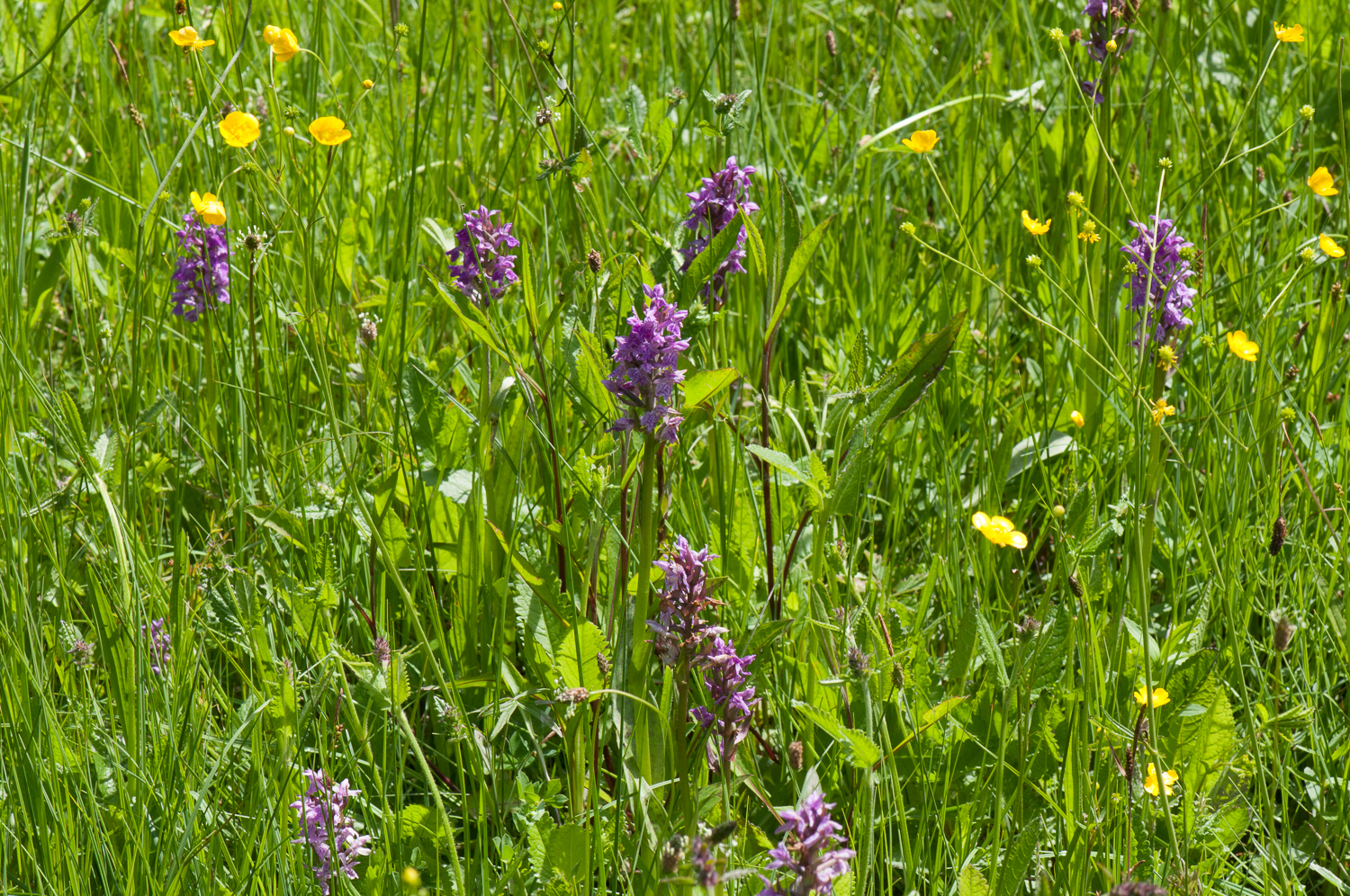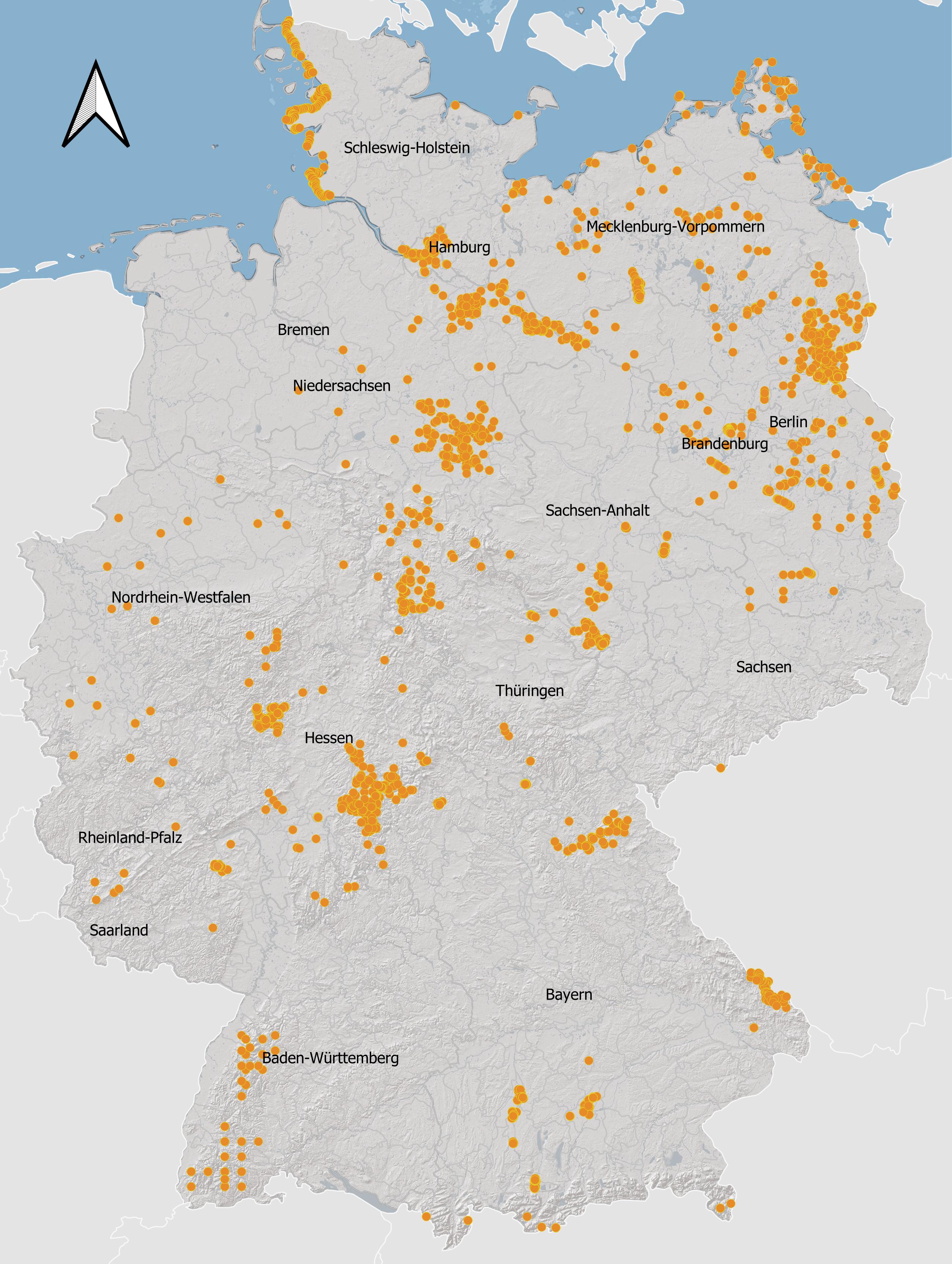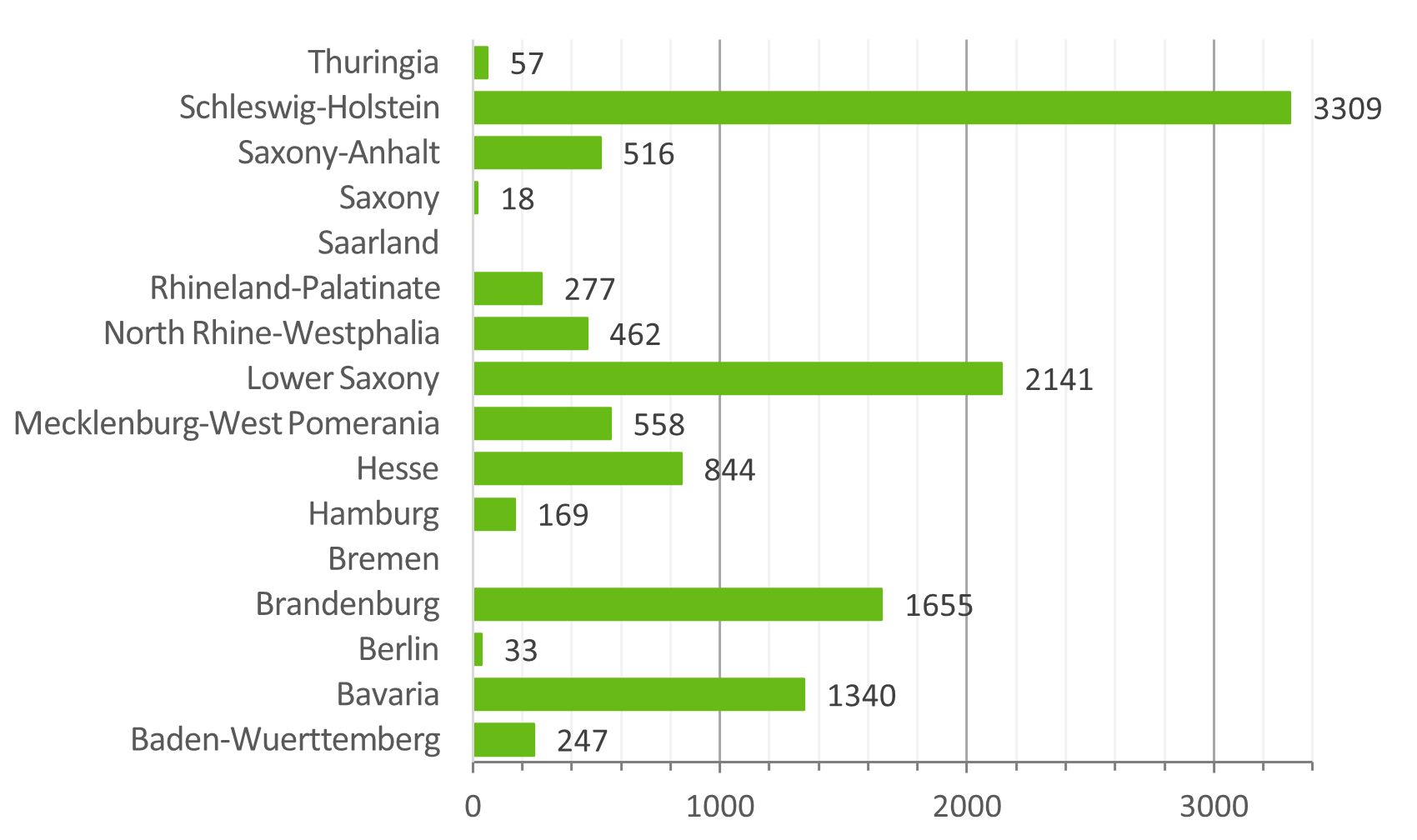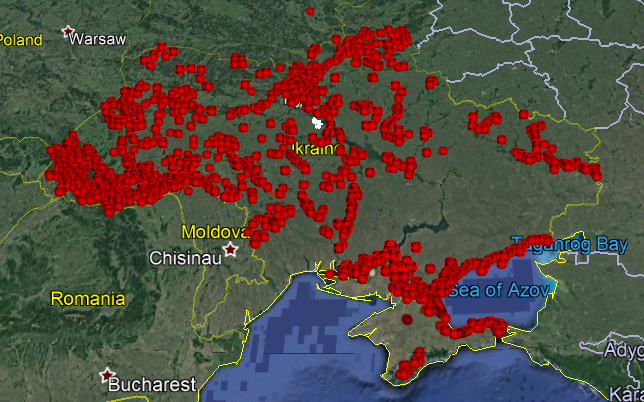EDGG has played and is still playing a major role in setting up regional and national vegetation-plot databases for grasslands or non-forest habitats in general, particularly in regions where there is no or no comprehensive national vegetation-plot database of all vegetation types. Currently there are five such databases.



Left: Rocky outcrop community in Saaremaa, Estonia. Middle: wet grassland, Bavaria, Germany. Right: Alpine grassland with Carex firma, Slovakia. Photos by J. Dengler
The Balkan Dry Grassland Database is a collaborative vegetation-plot database in the framework of the Eurasian Dry Grassland Group (EDGG). It aims at collecting all available data of mesic and dry grassland vegetation types from the Balkan peninsula. While so far BDGD mainly contains data from the Central and Eastern Balkans, we essentially collect all suitable plots from the territories of Bulgaria, Serbia, Croatia, Slovenia, Bosna and Hercegovina, Kosovo, Montenegro, Macedonia, Albania and Greece. The following vegetation classes are collected: Festuco-Brometea, Helichryso-Crucianelletea, Helianthemetea guttati, Koelerio-Corynephoretea (incl. Sedo-Scleranthetea and Festuceta vaginatae), Lygeo-Stipetea, Poetea bulbosae, Stipo-Agrostietea, Stipo-Trachynietea, Molinio-Arrhenatheretea, Elyno-Seslerietea, Daphno-Festucetea, Trifolio-Geranietea sanguinei (incl. Melampyro-Holcetea).
BDGD is a collaborative database, self-governed by the data contributors, who become members of the BDGD Consortium. BDGD data are available for basica and applied research to members of the Consortium only. Currently they are used for a series of papers on the consistent broad-scale classification of the dry grassland communities of the region. The data of BDGD are also contributed to the European Vegetation Archive (EVA) and the global vegetation-plot database "sPlot", thus making the Romanian Grassland data available for supraregional analyses (with opt-in authorship options for BDGD members). Persons with suitable plot data are invited to join.
Foundation: 2012
GIVD: http://www.givd.info/ID/EU-00-013
Custodian: Kiril Vassilev (Sofia, BG; kiril5914@abv.bg); Deputy Custodian: Armin Macanović (BA; arminecology@gmail.com)
Further members of the Governing Board: Jürgen Dengler (Wädenswil, CH; dr.juergen.dengler@gmail.com); Ioannis Tsiripidis (GR; tsiripid@bio.auth.gr); Danijela Stešević (ME; danijela.denist@gmail.com)
Consortium (January 2019): 55 members
Current content (January 2019): 11,396 plots

This vegetation-plot database, organised by German members of the Eurasian Dry Grassland Group (EDGG), aims at making grassland relevés from Germany available for fundamental and applied research, both within Germany and internationally, while ensuring that data providers get proper credit and benefit. We collect relevés of grasslands and herblands in the widest sense, i.e. everything except forest, shrubland, segetal and aquatic communities. Phytosociologically, the scope mainly refers to the classes Festuco-Brometea, Koelerio-Corynephoretea (including Sedo-Scleranthetea), Violetea calaminariae, Molinio-Arrhenatheretea, Juncetea maritimi (including Saginetea maritimae), Juncetea trifidi, Carici-Kobresietea, Calluno-Ulicetea (including Nardetea strictae), Loiseleurio-Vaccinetea, Salicetea herbaceae, Trifolio-Geranietea sanguinei (including Melampyro-Holcetea), Artemisietea vulgaris (incl. Galio-Urticetea) and Mulgedio-Aconitetea from the territory of Germany. Plot observations from other vegetation classes can be included as well if they form a minor part of a certain contribution. GrassVeg.DE accepts vegetation plots with (0.1-) 1-100 (-400) m² size, for which the cover of the species has been estimated in % or on an ordinal scale (Br.-Bl. scale, Londo scale or similar). Further details on requirements are here...
GrassVeg.DE considers itself as complementary to other German member databases of the European Vegetation Archive (EVA), thus will focus on digitisation of plots not yet contained there. GrassVeg.DE is a collaborative database, self-governed by the data contributors who become members of the GrassVeg.DE Consortium according to the GrassVeg.DE Bylaws. On 10 April 2017, when the threshold of 2,000 plots was reached, GrassVeg.DE joined the European Vegetation Archive (EVA) and recently the global plot database "sPlot", thus making the GrassVeg.DE data available for supraregional analyses (with opt-in authorship options for GrassVeg.DE members) while at the same time providing access to these megadatabases to its members. Persons with suitable plot data are welcome to join!
Foundation: 2016
GIVD: http://www.givd.info/ID/EU-DE-020
Governing Board ("Kuratorium") 2020-2021: Custodian: Ricarda Pätsch (Edmonton, Kanada; ricarda.paetsch@gmail.com); Deputy Custodian: Jürgen Dengler (Wädenswil, Schweiz; dr.juergen.dengler@gmail.com)
Former members: Thomas Becker (Trier; beckerth@uni-trier.de) & Thilo Heinken (Potsdam; heinken@uni-potsdam.de)
GrassVeg.DE Consortium (9 May 2018: 40 members): Thomas Becker, Ines Bruchmann, Timo Conradi, Jürgen Dengler, Martin Diekmann, Christian Dolnik, Hauke Drews, Cecilia Duprè, Maike Eisenberg, Hannes Feilhauer, Jamyra Gehler, Bärbel Heindl-Tenhunen, Holger Hauptlorenz, Thilo Heinken, Katrin Henning, Stefan Huck, Elisabeth Hüllbusch, Kai Jensen, Michael Jeschke, Martina Köhler, Patrick Lampe, Nancy Langer, Swantje Löbel, Stephanie Lorenz, Kristin Ludewig, Britta Marquardt, Thomas Michl, Romy Moebus, Anne Nöggerath, Ricarda Pätsch, Dorothee Putfarken, Melanie Rahmlow, Julia Schröder, Oliver Schuhmacher, Julienne Schweiger, Martin Stock, Sigrid Suchrow, Gesine Weiss, Camilla Wellstein, Julia Went

Current content (22 February 2022): 11,656 plots
Federal states:

Phytosociological classes (9 May 2018): Juncetea maritimi (26.3%), Festuco-Brometea (17.6%), Koelerio-Corynephoretea (16.6%), Molinio-Arrhenatheretea (11.5%), Trifolio-Geranietea (5.9%), Mulgedio-Aconitetea (5.6%), Artemisietea vulgaris (5.4%), Calluno-Ulicetea (4.1%), Polygono-Poetea (1.5%), Phragmito-Magno-Caricetea (1.1%), Montio-Cardaminetea (0.7%), other herbaceous classes (1.0%), woody classes (1.3%), unassigned (1.6%)
Plot sizes: 1 m² (30.2%), 10 m² (25.2%), 4 m² (7.4%), 25 m² (6.0%), 5 m² (5.2%), 9 m² (3.7%), 16 m² (3.6%), 20 m² (2.8%), 100 m² (2.3%), other (13.0%), unknown (0.5%)
Precision of coordinates: ≤ 5 m (19.9%), ≤ 50 m (17.7%), ≤ 500 m (28.4%), ≤ 5 km (28.3%), > 5 km (5.7%)
References:
Dengler, J., Becker, T., Conradi, T., Dolnik, C., Heindl-Tenhunen, B., Jensen, K., Kaufmann, J., Klotz, M., Kurzböck, C., Lampe, P., Langer, N., Marquardt, B., Putfarken, D., Rahmlow, M., Schuhmacher, O., Went, J. 2017. GrassVeg.DE – die neue kollaborative Vegetationsdatenbank für alle Offenlandhabitate Deutschlands. Tuexenia 37: 447-455. PDF
Jandt, U., Becker, T. & Dengler, J. 2013. Dry grasslands of Germany – call to support an initiative for a consistent, plot-based classification. In: Baumbach, H. & Pfützenreuter, S. (eds.) Steppenlebensräume Europas – Gefährdung, Erhaltungsmaßnahmen und Schutz: pp. 435–440. Thüringer Ministerium für Landwirtschaft, Forsten, Umwelt und Naturschutz, Erfurt, DE. PDF
Originally, this database was named "Database Dry Grasslands in the Nordic and Baltic Region" (with a slightly narrower scope). Now all available relevés of natural and semi-natural grasslands in the widest sense and related communities from the study region (Denmark, Faroer Islands, Iceland, Norway, Sweden, Finland, Svalbard and Jan Mayen, NW Russia, Belarus, Estonia, Latvia*, Lithuania*, N Poland, NE Germany*) are collected (* = new data from these countries are meanwhile collected by specialised national databases). Basically this means the phytosociological classes Festuco-Brometea, Koelerio-Corynephoretea (including Sedo-Scleranthetea), Molinio-Arrhenatheretea, Juncetea maritimi (including Saginetea maritimae), Ammophiletea arenarii (incl. Honckenyo-Elymetea), Juncetea trifidi, Carici-Kobresietea, Calluno-Ulicetea (including Nardetea strictae), Loiseleurio-Vaccinetea, Salicetea herbaceae, Scheuchzerio-Caricetea fuscae, Trifolio-Geranietea sanguinei (including Melampyro-Holcetea) and Mulgedio-Aconitetea. However, if a certain source also contains a small amount of other vegetation types, they are also accepted.
NBGVD is a collaborative database, self-governed by the data contributors who become members of the NBGVD Consortium according to the NBGVD Bylaws. The data of NBGVD are contributed to the European Vegetation Archive (EVA) and the global vegetation-plot database sPlot, thus making the Nordic-Baltic data available for supraregional analyses (with opt-in authorship options for NBGVD members) while at the same time providing access to these megadatabases to its members. Persons with suitable plot data are invited to join.
Foundation: 2010
GIVD: http://www.givd.info/ID/EU-00-002
Custodian (2020-2021): Jürgen Dengler (Wädenswil, CH; dr.juergen.dengler@gmail.com) − Deputy Custodian (2020-2021): Łukasz Kozub (Warsaw, PL; kozub.lukasz@gmail.com)
NBGVD Consortium (5 February 2018): 27 members

Current content (29 March 2024): 12,694 plots
Countries: Poland (24.8%), Sweden (24.6%), Belarus (12.9%), Estonia (10.3%), Faroe Islands (5.7%), Norway (5.6%), Svalbard and Jan Mayen (4.6%), Latvia (2.2%), Denmark (1.7%), Finland (1.7%), Russia (1.2%), Lithuania (1.0%)
Phytosociological classes: Koelerio-Corynephoretea (15.4%), Festuco-Brometea (14.5%), Sedo-Scleranthetea (8.3%), Molinio-Arrhenatheretea (7.3%), Scheuchzerio-Caricetea (6.6%), Trifolio-Geranietea (4.5%), Salicetea herbaceae (2.5%), Juncetea maritimi (2.2%),...
Plot sizes: 1 m² (30.0%), 4 m² (17.1%), 25 m² (13.5%), 0.64 m² (7.0%), 0.25 (4.0%),...
Precision of coordinates: <= 25 m (26.9%), 25 m - 1 km (40.9%), 1 - 10 km (28.5%)
Literature:
Skobel, N., Kozub, Ł., Dembicz, I., Boch, S., Bruun, H.H., Chusova, O., Golub, V., Helm, A., Iakushenko, D., Pawlikowski, P., Zaniewski, P. & Dengler, J. (2024) Nordic-Baltic Grassland Vegetation Database (NBGVD) – current state and future prospects. Vegetation Classification and Survey 5: 75–84. PDF
Dengler, J., Rūsiņa, S. 2012. Database Dry Grasslands in the Nordic and Baltic Region. Biodiversity & Ecology 4: 319–320. PDF
Dengler, J., Rūsiņa, S., Boch, S., Bruun, H.H., Diekmann, M., Dierßen, K., Dolnik, C., Dupré, C., Golub, V.B., Grytnes, J.-A., Helm, A., Ingerpuu, N., Löbel, S., Pärtel, M., Rašomavičius, V., Tyler, G., Znamenskiy, S.R., Zobel, M. 2006. Working group on dry grasslands in the Nordic and Baltic region – Outline of the project and first results for the class Festuco-Brometea. Annali di Botanica, Nuova Serie, 6: 1–28. PDF
The Romanian Grassland Database (RGD) is a vegetation-plot database that aims at collecting all available plot observations (phytosociological relevés) from non-woodland vegetation in Romania, thus complementing the Romanian Forest Database. Thus RGD collects any type of grassland vegetation (wet, mesic, dry, saline, alpine, rocky), but also other vegetation types (heathlands, ruderal and segetal vegetation, mires and aquatic vegetation) except forests and shrublands, from the territory of Romania.
Work on the database started in 2002, and all vegetation plots (relevés) are stored in TURBOVEG program. RGD is a collaborative database within the framework of the Eurasian Dry Grassland Group (EDGG), self-governed by the data contributors, who become members of the RGD Consortium according to the RGD Bylaws. Persons with suitable plot data are invited to join the RGD Consortium.
RGD’s Data Property and Governance Rules regulate the governance of the database, data provision, type of data availability regimes, data requests and terms of data use, rules for authorship and relationships with other databases like EVA, sPlot and GIVD. These rules are phrased similarly to the EVA Data Property and Governance Rules and the governance and data Rules of the sPlot Working Group.
The majority of the data in RGD has been digitized from published literature sources (90%), while the rest are unpublished relevés of Consortium members (10%). In total, RGD currently contains data from nearly 1076 different sources. There are two periods during which the majority of vegetation plots were recorded. The first peak (1960−1980) refers to a large number of vegetation studies in different regions of the country, while the second peak (2001−2010) is related to a great number of relevés sampled as a part of PhD or Master theses. The majority of plots is in the semi-restricted data availability regime (78%), while few have restricted access (21.7%) and even fewer free access (0.3%). Geographic coordinates are now available for 67% of the relevés.
The RGD data are available to Consortium members for fundamental and applied research in Romania, e.g. vegetation classification, biodiversity patterns and conservation projects. The data of RGD are also contributed to the European Vegetation Archive (EVA) and the global vegetation-plot database “sPlot”, thus making the Romanian Grassland data available for supraregional analyses (with opt-in authorship options for RGD members) while at the same time providing access to these megadatabases to its members.
Foundation: 2002
GIVD: http://www.givd.info/ID/EU-RO-008
Custodian: Estzer Ruprecht (Cluj-Napoca, RO; eszter.ruprecht@ubbcluj.ro)
Deputy Custodian & Database Manager: Kiril Vassilev (Sofia, BG; kiril5914@abv.bg)
Consortium members (January 2019): 60
Current content (January 2019): 42,860 plots

The Ukrainian Grassland Database (UGD) is a vegetation-plot database that aims at collecting all available plot observations (phytosociological relevés) from grassland vegetation in Ukraine. This refers to the phytosociological classes Molinio-Arrhenatheretea, Festuco-Brometea (including Helianthemo-Thymetea), Koelerio-Corynephoretea s.l., Calluno-Ulicetea (including Nardetea strictae), Phragmito-Magnocaricetea, Scheuchzerio-Caricetea fuscae, Festuco-Puccinellietea, Ammophiletea, Cakiletea maritimae, Trifolio-Geranietea sanguinei.
Work on the database started in 2011, and all vegetation plots (relevés) are stored in TURBOVEG program. UGD is a collaborative database within the framework of the Eurasian Dry Grassland Group (EDGG), self-governed by the data contributors, who become members of the UGD Consortium according to the UGD Bylaws. Persons with suitable plot data are invited to join the UGD Consortium.
The UGD data are available to Consortium members for fundamental and applied research in Ukraine, e.g. vegetation classification, biodiversity patterns and conservation projects. The data of UGD are also contributed to the European Vegetation Archive (EVA) and the global vegetation-plot database “sPlot”, thus making the Ukrainian Grassland data available for supraregional analyses (with opt-in authorship options for UGD members) while at the same time providing access to these megadatabases to its members.
Foundation: 2011
GIVD: http://www.givd.info/ID/EU-UA-001
Custodian: Anna Kuzemko (Kyiv, UA; anyameadow.ak@gmail.com)
Deputy Custodian: Denys Vynokurov (Kyiv, UA, denys.vynokurov@gmail.com)
Consortium members (December 2020): 21
Current content (December 2020): 11,758 plots

